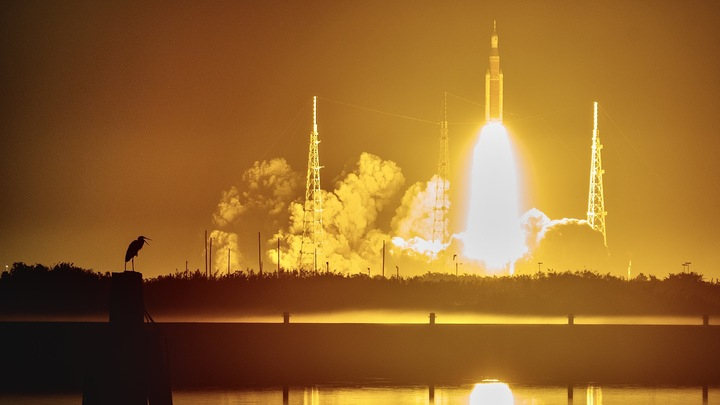NASA's mighty SLS megarocket for Artemis moonshots 'unaffordable' for sustained exploration, audit finds

NASA needs to be more transparent about the costs and schedules associated with its Space Launch System (SLS) moon rocket, a newly released audit has found.
SLS is NASA's rocket of choice for its Artemis program, which aims to establish a permanent, sustainable presence on and around the moon by the end of the 2020s. But that ambitious goal may be tough to achieve given how expensive SLS is, according to the audit, which was conducted by the U.S. Government Accountability Office (GAO) and released on Thursday (Sept. 7).
"Senior NASA officials told GAO that at current cost levels, the SLS program is unaffordable," according to the GAO report, which was delivered to the congressional committees that have jurisdiction over NASA's budget. The SLS program's cost "exceeds what NASA officials believe will be available for its Artemis missions," the report's authors added.
Related: Is SLS worth the cost? NASA's new megarocket comes with a mega price tag
NASA has spent $11.8 billion since it began developing SLS in 2011. After many delays, the huge rocket debuted on Nov. 16, 2022, when it launched NASA's successful uncrewed Artemis 1 mission to the moon.
An additional $11.2 billion was allocated in the White House's 2024 federal budget request for future work on SLS from 2024 through 2028. NASA plans to use these funds to develop core stages, rocket engines and other components for SLS, ultimately to increase the vehicle's efficiency as well as the amount of cargo that can be delivered to the moon for Artemis.
However, the baseline costs and schedules for this future work have not been established despite GAO's nearly decade-long concerns, according to the report, which was put together after interviewing NASA officials and reviewing the agency's current activities, SLS documentation and future plans.
Breaking space news, the latest updates on rocket launches, skywatching events and more!
"NASA does not plan to measure production costs to monitor the affordability of the SLS program," the report states.
A 2021 revision in NASA's policy had allowed the agency to stick to five-year production and operation cost estimates after the SLS first demonstrated its capability, and those estimates fit within NASA's overall budget. But the estimates cannot replace official cost baselines and are "poor tools to measure cost performance over time," the GAO said in the new report.
The audit also noted that NASA hasn't updated its estimates to include increasing costs, like those due to the delay of the Artemis 4 mission from 2026 to 2028. The space agency had awarded a contract of close to $2 billion to build the core stages for the Artemis 3 and Artemis 4 missions, but GAO's audit of the contract shows "the cost to produce successive core stages is increasing over time."
This is not the first time that SLS costs have been scrutinized. Those concerns came as early as 2014, just three years after work on the SLS began. To monitor program affordability, the GAO had asked NASA at the time to outline costs for flying the SLS Block 1, which was being built for Artemis 1, as part of the future Artemis 2 and Artemis 3 missions.
"NASA partially concurred, but has not yet implemented this recommendation," the GAO said in a summary statement, which was also released on Thursday.
In late 2021, a report by NASA's Office of Inspector General showed that NASA will likely spend a total of $93 billion on the Artemis program between 2012 and 2025, and that each SLS launch will cost about $4.1 billion. A large chunk of the budget was attributed to hiring contractors in every U.S. state and more than 20 similar partners across Europe.
The GAO report notes a few steps recently taken by NASA to save costs, including using specific contracts that place the risk on contractors rather than the government, "but it is too early to determine the effects of such strategies," the GAO said in its summary statement.

Sharmila Kuthunur is an independent space journalist based in Bengaluru, India. Her work has also appeared in Scientific American, Science, Astronomy and Live Science, among other publications. She holds a master's degree in journalism from Northeastern University in Boston.

